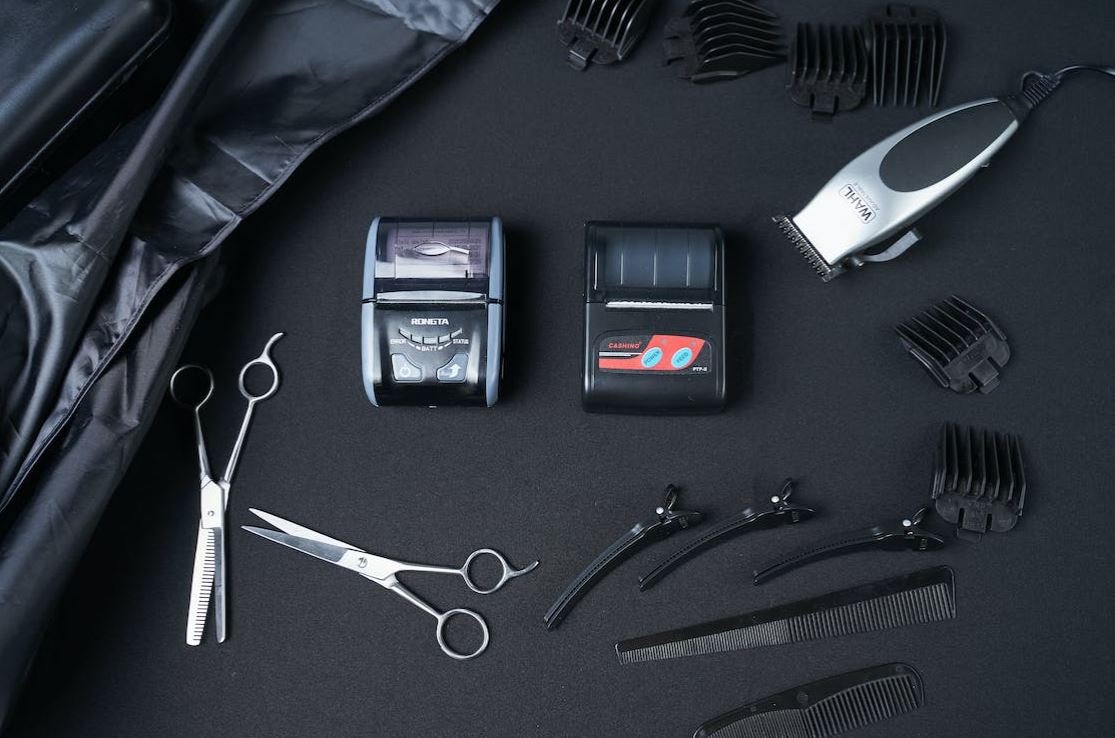Film Grain Effect
The film grain effect is a popular technique used in photography and videography to give images a vintage or artistic look. It adds a textured or grainy appearance to an image, reminiscent of the film days. This effect has gained popularity in recent years, especially in the digital era, as it adds character and depth to the visual content. Many photographers and filmmakers now incorporate the film grain effect into their work to enhance the mood and evoke nostalgia.
Key Takeaways:
- The film grain effect adds a vintage or artistic look to images and videos.
- It creates a textured or grainy appearance, reminiscent of traditional film.
- The film grain effect enhances mood and evokes nostalgia.
How Does the Film Grain Effect Work?
The film grain effect is achieved by adding random noise to an image or video to simulate the appearance of film grain. This noise is typically generated using algorithms or overlaying pre-recorded film grain textures onto the image. The amount and intensity of the grain can be adjusted to achieve the desired look.
*The film grain effect adds a unique texture that can’t be replicated with digital filters alone.*
Benefits of the Film Grain Effect
The film grain effect offers several benefits for photographers and filmmakers looking to add a vintage or artistic touch to their work.
*By incorporating this effect, you can create visually appealing images and videos that stand out from the digital crowd.*
- Enhanced Mood: The film grain effect can change the overall mood and atmosphere of an image. It adds a nostalgic or dreamlike quality, making the content more engaging and emotionally impactful.
- Artistic Style: By using the film grain effect, you can give your work a unique and artistic feel. It adds character and depth to images, transforming them into works of art.
- Vintage Aesthetic: The film grain effect can evoke a sense of nostalgia, reminding viewers of traditional film photography and cinematography. It can transport them back in time and create a sense of familiarity and warmth.
Creating the Film Grain Effect
There are various methods to create the film grain effect, depending on your preferred software or tools. Here are a few common techniques:
- Add Noise Filter: Many image and video editing software have built-in noise filters that allow you to add grain to your content. Experiment with different settings and intensities to achieve the desired effect.
- Use Film Grain Overlays: You can find pre-made film grain overlays online or create your own. Overlay these textures onto your images or videos and adjust the blending mode and opacity levels to achieve the desired result.
- Adjust Grain with Curves: Advanced editing software often provides tools like curves adjustments, which allow you to fine-tune the grain effect. By manipulating the curves, you can control the intensity and distribution of the grain.
*Experiment with different techniques and find the one that works best for your desired outcome.*
Comparing Film Grain Intensity
| Image | Low Intensity | Medium Intensity | High Intensity |
|---|---|---|---|
 |
 |
 |
Is the Film Grain Effect Right for You?
The film grain effect can add a distinct and artistic touch to your visual content. However, it might not be suitable for every project or style. Consider the following factors before applying the film grain effect:
- Subject Matter: Some subjects may benefit more from the film grain effect than others. Experiment and see if it enhances the mood and atmosphere of your content.
- Intended Look: Determine if the vintage or artistic style aligns with your vision for the project. The film grain effect should complement the overall aesthetic and narrative.
- Client or Audience: Understand your target audience and their preferences. If the film grain effect resonates with them, it can be a powerful tool to create a connection.
Comparing Film Grain Types
| Grain Type | Description |
|---|---|
| Traditional Grain | Fine, uniform grain found in traditional film photography. |
| High Contrast Grain | Grain with high contrast, resulting in a more dramatic effect. |
| Color Grain | Grain that incorporates color variations, adding an artistic touch. |
Experiment and Create
The film grain effect provides an opportunity to experiment and unleash your creativity. It is a versatile tool that can enhance your visual storytelling.
*Add the film grain effect to your arsenal and explore the possibilities it can bring to your work.*

Common Misconceptions
Film Grain Effect
There are several common misconceptions surrounding the film grain effect in photography and videography. These misconceptions often lead to misunderstandings about the purpose and application of this effect. Let’s explore three of these misconceptions:
Misconception 1: Film Grain is a Defect
– Film grain is intentionally added to give a vintage or retro look to images and videos.
– Many photographers and videographers use grain intentionally to add character and depth to their work.
– The film grain effect is not a result of poor quality or technical limitations, but rather a creative choice.
Misconception 2: Film Grain is Noise
– Film grain is different from digital noise, which often results from using higher ISO settings.
– Film grain has a more organic and pleasing aesthetic compared to digital noise.
– While both grain and noise add texture to the image, they are not the same thing.
Misconception 3: Film Grain Should be Eliminated
– Some people believe that film grain is undesirable and should be removed at all costs.
– However, removing grain can also remove the unique visual charm and atmosphere it brings to the image.
– Film grain can enhance the mood and storytelling of a photo or video, adding a sense of nostalgia or authenticity.
Misconception 4: Film Grain is Only for Vintage Looks
– While film grain is commonly associated with vintage or retro aesthetics, it can also be used in contemporary work.
– By strategically incorporating film grain, photographers and videographers can create a distinct style or evoke specific emotions in their audience.
– Film grain is a versatile tool that can be applied creatively to various genres and genres of photography and videography projects.
Misconception 5: Film Grain Cannot be Replicated Digitally
– There are numerous software and editing tools available today that can convincingly replicate the appearance of film grain.
– Professionals and amateurs alike can achieve the film grain effect digitally without the need for actual film.
– These digital tools allow for greater control and flexibility in adjusting the grain effect to meet the artist’s vision.

Film Grain Effect and Its Impact on Photography
Film grain effect has long been a popular technique used in photography to add a textured and vintage look to images. This effect emulates the appearance of film photographs, which often exhibit grainy textures due to the chemical process involved in film development. In this article, we will explore the various aspects and applications of film grain effect, and how it can enhance the visual appeal of photographs.
The Evolution of Film Grain
| Decade | Grain Size | Popular Film Stocks |
|---|---|---|
| 1950s | Coarse | Kodak Tri-X, Ilford HP5 |
| 1970s | Medium | Fuji Superia, Kodak Gold |
| 1990s | Fine | Kodak Portra, Fujifilm Pro 400H |
Over the years, the size of film grain has varied, influenced by technological advancements and the preferences of photographers. In the 1950s, coarse-grained films like Kodak Tri-X and Ilford HP5 were prominent, creating a distinctive vintage look. In the 1970s, medium grain films such as Fuji Superia and Kodak Gold gained popularity. By the 1990s, fine-grained films like Kodak Portra and Fujifilm Pro 400H became the go-to choices for photographers seeking a more refined grain structure.
The Aesthetic Appeal of Film Grain
| Aspect | Description |
|---|---|
| Textured Look | The grain adds a unique texture to photographs, giving them a distinct character. |
| Retro Feel | Film grain effect imparts a vintage atmosphere, reminiscent of older film photography. |
| Enhanced Dynamic Range | Grain can help to retain details in bright and shadowed areas, expanding the dynamic range. |
The film grain effect holds significant aesthetic appeal, providing several visual enhancements. It adds a textured look to images, augmenting their overall appeal. Furthermore, the retro feel conveyed by the grain effect evokes a sense of nostalgia and can elevate the emotional impact of a photograph. Interestingly, film grain can also contribute to an increased dynamic range, allowing photographers to capture more details in both bright and shadowed areas.
Contemporary Applications of Film Grain
| Application | Description |
|---|---|
| Portraiture | The film grain effect adds depth and character to portraits, enhancing their visual impact. |
| Landscape Photography | By incorporating film grain, landscapes can acquire a timeless and nostalgic quality. |
| Street Photography | Film grain helps street photographs evoke a gritty ambiance and enhances their storytelling. |
Today, film grain effect is not solely limited to film photography. It has found its way into digital photography, where it can be simulated through various post-processing techniques. This technique is widely used in portraiture, as it adds depth and character to subjects. Landscape photographers also utilize the film grain effect to infuse their images with a timeless and nostalgic quality. In the realm of street photography, the grain effect contributes to enhancing the gritty ambiance and storytelling elements of the photos.
The Science Behind Film Grain
| Chemical Composition | Appearance |
|---|---|
| Silver Halide Crystals | The chemical composition of film contains light-sensitive silver halide crystals, which contribute to grain. |
| Development Process | During film development, the size of the silver halide crystals affects the grain’s appearance and structure. |
The presence of silver halide crystals in the chemical composition of film is responsible for the grain effect. These crystals react to light and form different patterns, resulting in variations in appearance and structure. The size of the silver halide crystals, determined during the development process, significantly impacts the final grain appearance.
Film Grain Effect vs. Digital Noise
| Characteristic | Film Grain Effect | Digital Noise |
|---|---|---|
| Visual Appearance | Visually pleasing, organic texture | Undesirable, random pixel patterns |
| Reproducibility | Can be consistently replicated | Can vary inconsistently |
| Control | Allows for intentional application | Usually an undesirable side effect |
The film grain effect is often compared to digital noise, which is an undesirable side effect in digital photography. While both exhibit a textured appearance, film grain effect is considered visually pleasing and can be consistently replicated. In contrast, digital noise appears as random pixel patterns and lacks the charm of the organic texture produced by grain. Additionally, the film grain effect provides photographers greater control, allowing them to apply it intentionally for artistic purposes.
Famous Photographers Who Embrace Film Grain Effect
| Photographer | Style/Movement | Notable Works |
|---|---|---|
| Sally Mann | Documentary, Fine Art | “Immediate Family,” “Deep South” |
| Henri Cartier-Bresson | Street Photography, Photojournalism | “The Decisive Moment,” “Man and Dog” |
| Daido Moriyama | Street Photography | “Stray Dog,” “Tales of Tono” |
Many renowned photographers have embraced the film grain effect as a signature style within their work. Sally Mann is known for her documentary and fine art photography, often featuring the grain effect to evoke a nostalgic and dreamlike quality. Henri Cartier-Bresson, a pioneer of street photography, utilized film grain to heighten the emotion and candidness of his subjects. Daido Moriyama, another prominent street photographer, is recognized for his gritty black and white images where the film grain adds a raw and intense atmosphere.
The Rise of Digital Filters and Film Grain Overlay
| Popular Digital Filters | Features |
|---|---|
| Offers various filters, including grain effects, to replicate the look of film photographs. | |
| VSCO | Provides a wide array of adjustable filters and film presets to mimic different film stocks. |
| Adobe Lightroom | Allows photographers to apply customizable grain effects, granting full control over the appearance. |
In the digital era, numerous platforms and software have emerged, offering digital filters and film grain overlays to replicate the look of film photographs. Instagram’s filters include grain effects that can be adjusted to suit individual preferences. VSCO provides photographers with a vast range of adjustable filters and film presets, allowing them to recreate the characteristics of specific film stocks. Adobe Lightroom enables photographers to apply customizable grain effects, providing extensive control over the appearance of grain in digital images.
The Artistic Relevance of Film Grain Effect
| Aspect | Impact |
|---|---|
| Emotional Connection | The film grain effect taps into viewers’ emotions, evoking nostalgia and a sense of authenticity. |
| Aesthetic Appeal | Grain enriches the visual appeal by adding depth, texture, and an organic quality to photographs. |
| Deliberate Style | Incorporating the film grain effect showcases a deliberate artistic choice, reminiscent of traditional film photography. |
The film grain effect possesses significant artistic relevance in contemporary photography. By triggering an emotional connection with viewers, it elicits nostalgia and a perception of authenticity. Aesthetically, the effect elevates the visual appeal by introducing depth, texture, and an organic quality to photographs. Additionally, incorporating the film grain effect in digital photography demonstrates a deliberate artistic choice, bridging the gap between traditional film photography and the modern digital medium.
Overall, the film grain effect holds a special place in the world of photography. Its evolution, aesthetic appeal, and applications have demonstrated its lasting relevance across different genres. As technology progresses, the film grain effect continues to be cherished and utilized, providing photographers with a powerful tool to enhance their artistic vision and convey emotions beyond the realm of digital imagery.
Frequently Asked Questions
Film Grain Effect
What is film grain effect in movies and videos?
Film grain effect is a visual texture that replicates the appearance of grain found in traditional film stock. It is often added to digital video to give it a vintage or cinematic look.
Why is film grain effect used?
Film grain effect is used for various reasons including adding an artistic touch, enhancing the nostalgic feel of a video, or creating a more authentic film-like experience.
How is film grain effect added to videos?
Film grain effect can be added using video editing software or plugins. There are also online services and mobile apps available that offer film grain overlays or filters to apply the effect.
Can film grain effect be adjusted or customized?
Yes, film grain effect can often be adjusted and customized to suit the desired look. Different software and plugins may provide options to control the intensity, size, type, and other parameters of the film grain effect.
Is film grain effect suitable for all types of videos?
Film grain effect can be applied to various types of videos, but its suitability depends on the intended aesthetic and message of the video. It is commonly used in artistic, vintage, or cinematic projects.
Does film grain effect affect the overall quality of a video?
Film grain effect adds a deliberate texture to videos and can alter the perceived quality. While it may introduce some noise, it is considered an intentional aesthetic choice and does not necessarily degrade the overall quality if applied appropriately.
Is film grain effect only used in movies and professional videos?
Film grain effect is not exclusive to movies and professional videos. It can be used in any video production, including personal projects, advertisements, music videos, and more. Its usage depends on the desired visual style.
Can film grain effect be added to still images?
Yes, film grain effect can be added to still images as well. Many image editing software and apps offer film grain filters or overlays to achieve a similar effect.
Are there any alternatives to film grain effect?
Yes, there are alternatives to film grain effect. Some other visual effects or filters, such as sepia tone, vignette, or texture overlays, can also help achieve a vintage or retro aesthetic.
Where can I find film grain effects or overlays?
Film grain effects and overlays can be found on various websites that offer stock footage, video editing resources, or plugins for popular editing software. Additionally, online marketplaces and subscription-based platforms dedicated to video editing resources may have film grain effects available.




